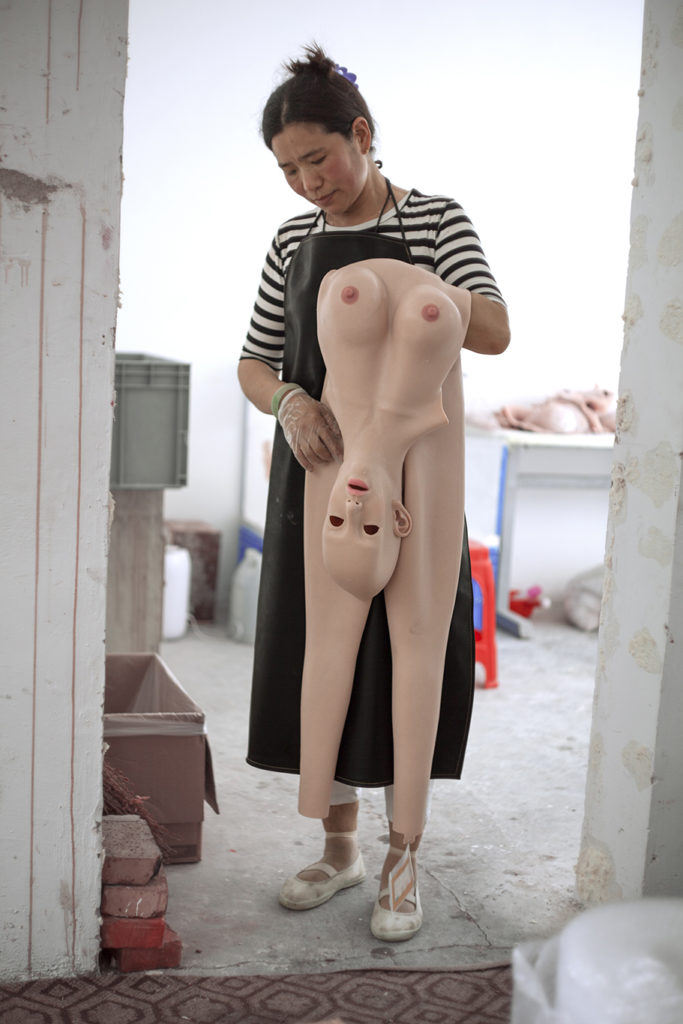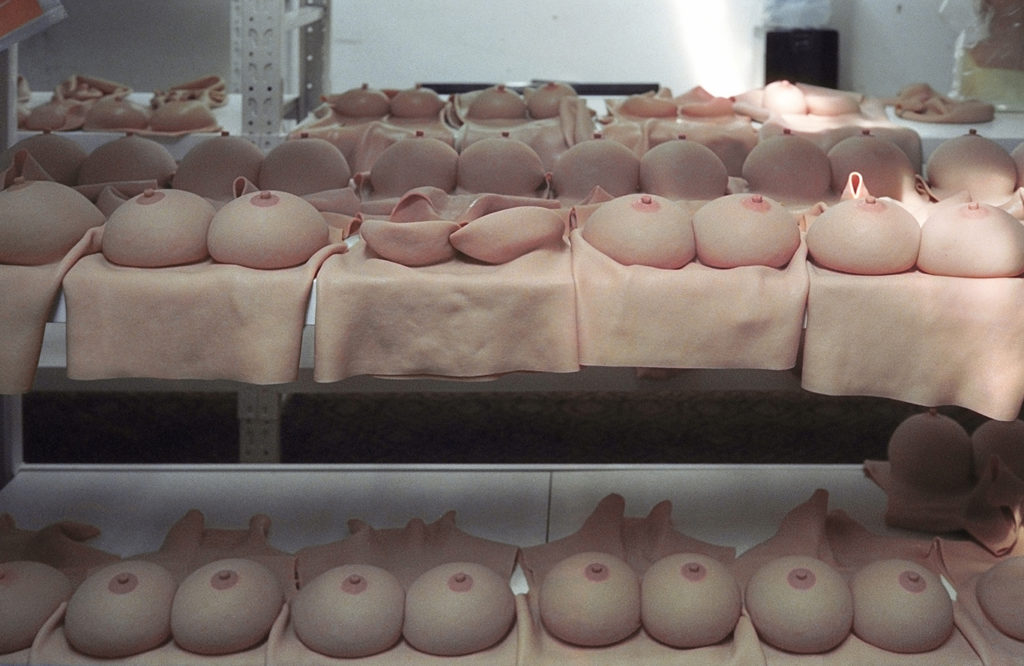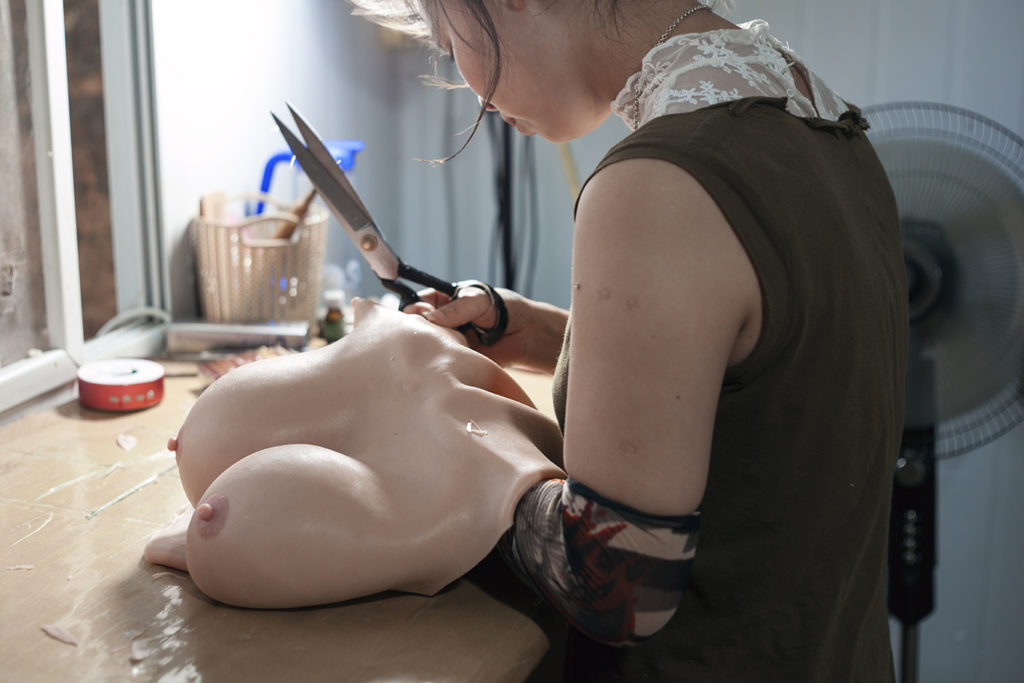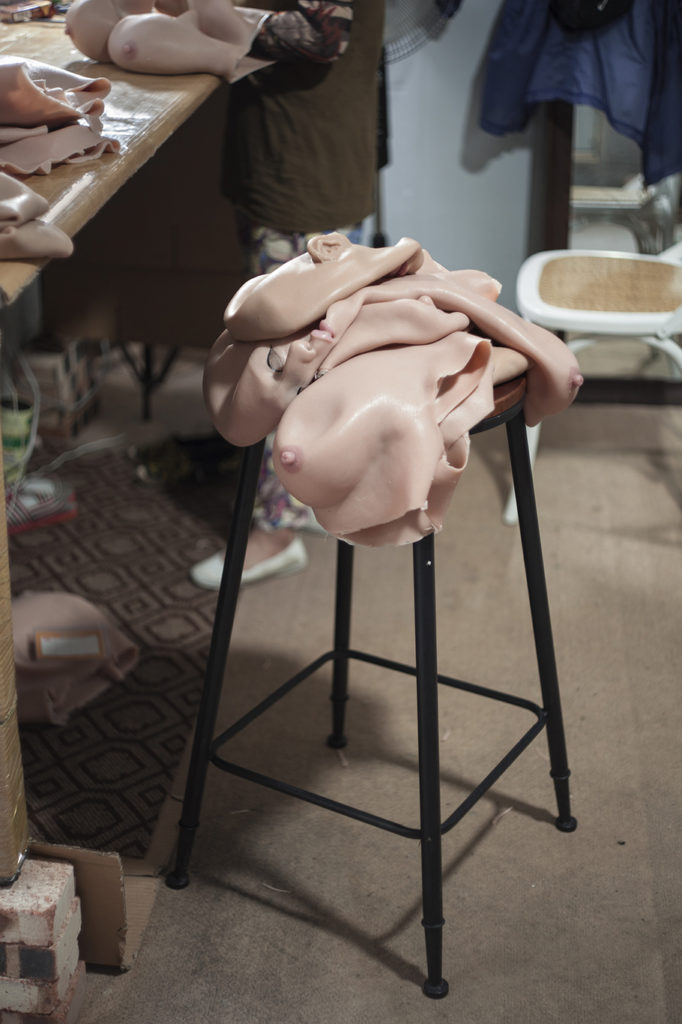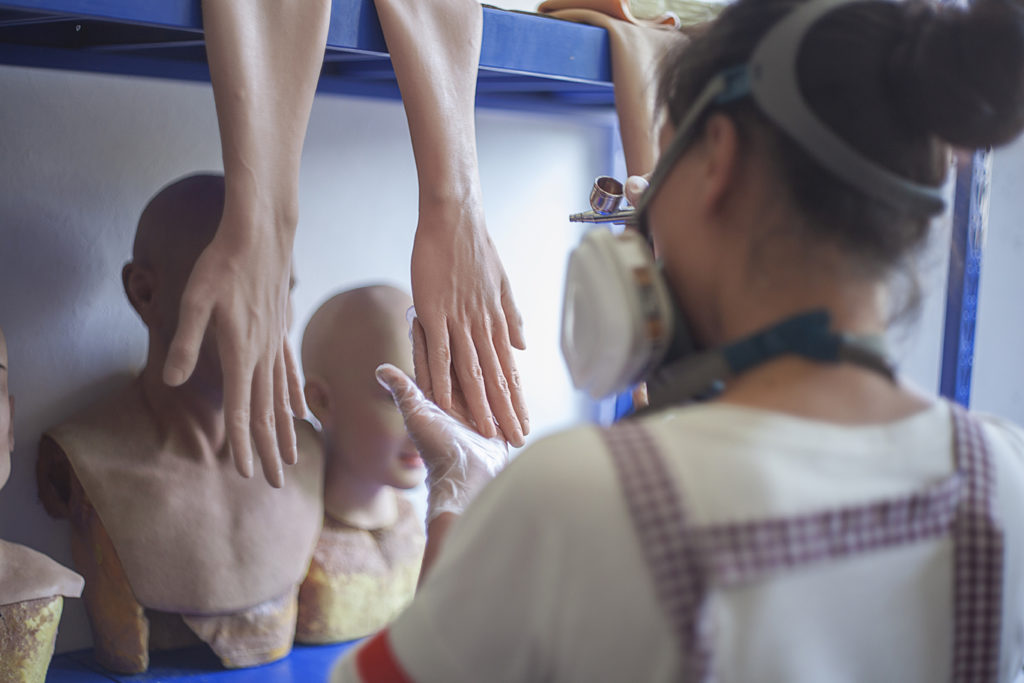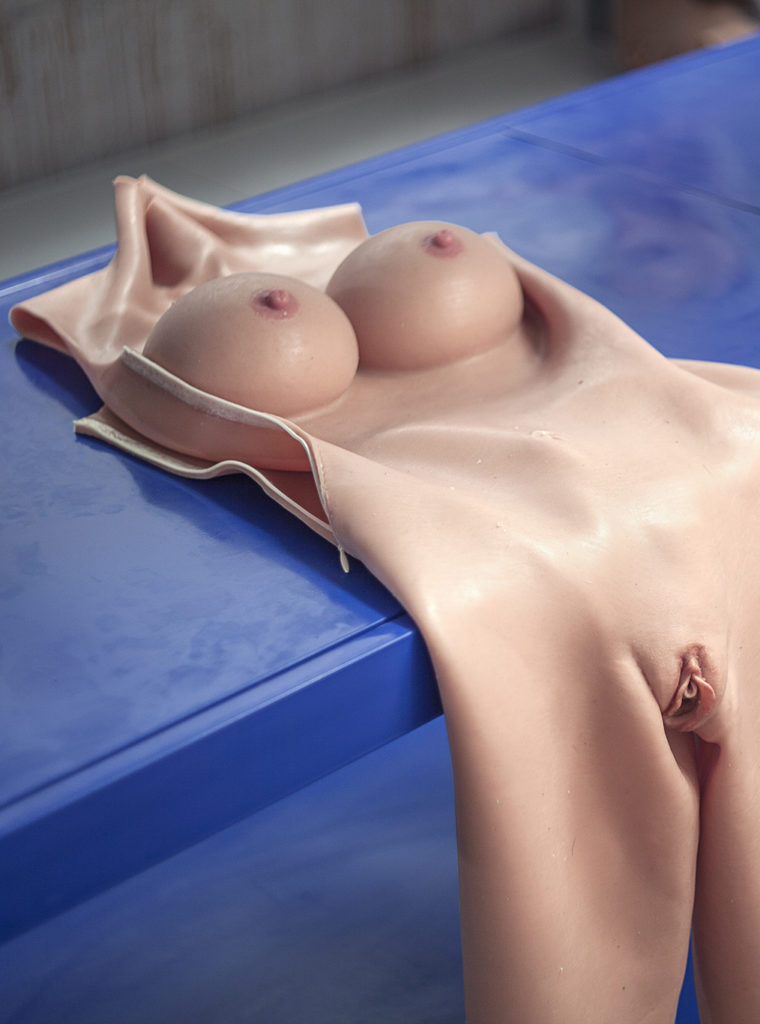Beauty Makers
Text by Lexington Davis
The photo series Beauty Makers and Fetish of the Image, which portray the producers and consumers of silicon female body masks, explores how increased globalization and interconnectivity does not necessarily lead to equal access and visibility. The two sets of photos are markedly different, both aesthetically and in the way they position their subjects. In Wieczorek’s photos of the Roanyer factory in Xuzhou, China, she depicts a predominately female workforce as they produce costly skin suits for an overwhelmingly male-identifying clientele. The employees do not look at the camera, and are instead immersed in their daily tasks: trimming, sewing, airbrushing, and compiling the suits. The images of the maskers are, in contrast, highly performative and carefully posed. Unlike the factory workers, they stare directly into the lens of the camera, demanding the viewer’s gaze. Though the maskers rarely wear their suits in public, many of them enjoy producing and sharing images of themselves dressed in them. Posts on the Female Masking are almost exclusively photographs, which other users upvote and comment on. However, like most fetishes, dressing in silicon skin suits is still widely considered taboo. The community of enthusiasts is thus pushed out of sight, to the privacy of their homes or online safe spaces. Though the maskers’ desires are socially marginalized, economically they are seen as a source of revenue and thus a market has emerged specifically to fulfill them. Reflecting on the relationship between neoliberalism and gay identity, Ann Pellegrini wonders: “Might these consuming subjects also queer capitalism?” But what does queering capitalism mean when expensive commodities are produced by an unseen “Third World” workforce and purchased by comparatively privileged Western consumers? Marina Gržinić argues that “global capitalism functions not with division but with entanglement,” implicating and involving everything and everyone. According to her, this actively “conceals the global post-Fordist division of labor, which can be best described as an international division of racialized labor between the first, second, and third worlds.” As the margins are increasingly blurred, marginalization becomes harder to qualify and protest. Difference is adopted a marketing strategy, and queer desires are swiftly commoditized. After all, what connects the people in these two sets of images other than the commodities exchanged between them? In photos of the factory workers, the women handle the suits with care, but indifference. For the maskers, however, they are sources of empowerment, the means through which they enter and literally embody the “other.” But as the majority of maskers identify as heterosexual men in their daily lives, they do not have to experience the real consequences that come with living as a woman, including lower wages, limited opportunities, and gender-based violence. The human “other”—the flesh-and-blood woman producing the suits—remains distant and unknown.
the text accompanied the exhibition “Out of sight. Picturing the unseen”at the Finnish Museum of Photography (12.06 – 1.09.2019)
